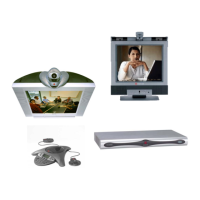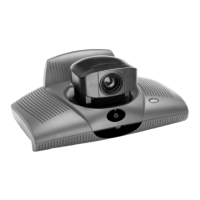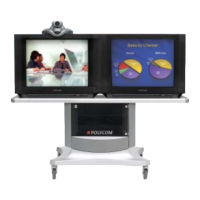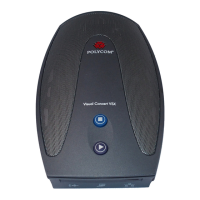INTEGRATING THE EF2280 INTO YOUR SYSTEM
© Polycom, Inc. 31 VORTEX EF2280 Reference Manual
Customize
Setting for Your
Particular
Application
The following sections will describe customizing parameters on the EF2280
for your particular application if you are not using Preset 0.
B
UILD
Y
OUR
E
CHO
C
ANCELLER
R
EFERENCE
The acoustic echo canceller (AEC) reference should generally contain exactly
the same audio signals as what is coming out of your loudspeaker(s), since
the signal output from the loudspeaker is what is then picked up by the
room’s microphones causing acoustic echo. Note that this statement is a gen-
eral statement. Conditions for this being true follow:
If your system
does NOT have
sound
reinforcement,
• The AEC reference should contain exactly the same audio as the loud-
speaker output: all far end audio, audio from the phone add, program
audio, etc.
• If your system contains stereo inputs and outputs, the reference must
contain a mix of both stereo inputs. For example, if your VCR audio is in
stereo, the reference should contain both the left and right signals each
attenuated by 3 dB, as well as any other audio that is going to your loud-
speaker.
• If you are using crosspoint gains in the loudspeaker mix, apply the same
gains to the signals in your reference.
If your system
has sound
reinforcement,
• Do NOT mix your room microphones into the reference, but include all
other audio (program audio, remote audio, phone audio, etc.).
E
CHO
C
ANCELLER
R
EFERENCE
FOR
M
ULTIPLE
V
ORTEX
D
EVICES
In a system with multiple devices, we recommend that one device be desig-
nated as the unit that provides the EF bus reference for the acoustic echo
cancellers. This unit takes one of its reference signals (either Ref 1 or Ref 2)
and places it on the EF bus. All other units that are linked together may use
the EF bus reference as the reference for their echo canceller, or they can use
their own internal references. The references may include a mix of any input,
with crosspoint gains, including W, X, Y, and Z busses. Set the EF Bus Refer-
ence in the System Menu of the LCD Menu (See “EF Bus Reference” on
page 28).
Setting up the
Bus Reference
If all far end audio and program audio sources are on the
same Vortex device,
1. Assign far end audio and program audio sources to Reference 1 on the
originating device.
2. On the EF Bus page in Conference Composer for the originating device,

